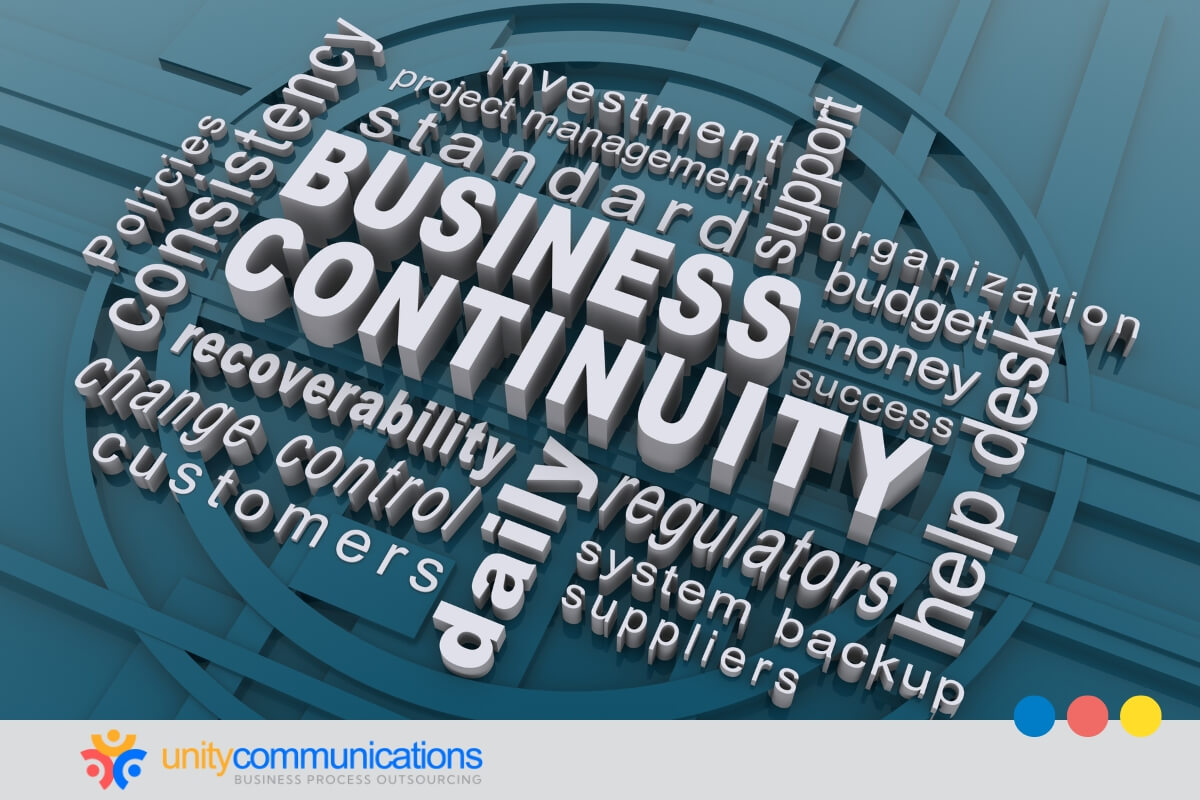Table of Contents
Companies are facing increasing pressure to modernize operations. Some turn to traditional business process outsourcing (BPO). However, its cost-focused, transactional model often limits innovation and strategic impact. More businesses are embracing global capability centers (GCCs) to foster digital transformation and enterprise agility.
This article explores how GCCs are redefining outsourcing digital operations and why leading enterprises make them a pillar of transformative strategies. Keep reading to learn more!
What are GCCs?

GCCs are dedicated offshore units wholly owned and operated by multinational enterprises to deliver a wide range of business and technology services. Unlike traditional outsourcing providers, GCCs are an extension of the parent company, aligned closely with its goals, culture, and processes.
Initially, GCCs handled cost-driven, non-core activities, such as finance, HR, and customer support. However, their role has significantly expanded over the past decade. Today, GCCs are centers of excellence. They manage complex IT functions, driving innovation and expediting digital transformation across enterprises.
This shift reflects a broader change in global sourcing strategies, moving away from cost centers to value creators.
India alone is home to over 1,600 GCCs, employing over 1.6 million professionals and contributing around $60 billion annually. Furthermore, over 60% of new GCCs focus on advanced digital capabilities to streamline operations while strengthening oversight. These include artificial intelligence, data analytics, and cloud engineering.
How does it compare with general BPO?
To further understand the strategic importance of GCC models, let’s compare them with traditional BPO. We define BPO as contracting third-party vendors to perform specific non-core business functions.
This approach reduces operating costs and enhance efficiency. But BPO sometimes lacks the alignment, control, and innovation for enterprise-scale digital transformation. Conversely, GCCs offer a fundamentally different value proposition:
- Greater control and alignment. GCCs are wholly owned subsidiaries. They provide parent companies more oversight over operations, data security, and strategy. This ensures decisions directly support enterprise goals without external dependency.
- Faster capability building. They allow businesses to quickly build dedicated, domain-specific teams with deep institutional knowledge. As a result, organizations accelerate time-to-market and reduce learning curves.
- Engine for innovation. GCCs can house research and development (R&D) and digital labs to create proprietary solutions. This drives differentiation and competitive advantage in crowded markets.
- Strategic integration. Unlike transactional BPO models, GCCs are embedded into the enterprise’s long-term digital roadmap. Investments contribute to sustainable transformation.
- Access to global talent. GCCs tap into diverse, high-skill talent pools worldwide, helping enterprises scale capabilities efficiently. This broadens expertise and enables round-the-clock operations.
- Cost optimization with value creation. While reducing operating costs, GCCs also focus on driving business value through innovation and process excellence. This balance delivers both savings and strategic growth.
- Agility and resilience. GCCs enhance organizational agility. You respond faster to market shifts.
In short, this model is ideal than traditional outsourcing if you prefer to retain control while enhancing digital operations.
The role of GCCs in outsourcing digital operations
In traditional BPO agreements, external vendors handle narrowly scoped tasks. GCCs offer a strategic and scalable platform for end-to-end digital delivery.
GCCs are redefining how companies approach outsourcing digital operations in the following ways:
1. Digital-first operating models
A digital-first operating model is an approach that embeds digital technologies and mindsets into every aspect of operations. In the context of GCCs, this means adopting agile methodologies, cloud infrastructure, and automation as standard practices.
Digitally driven GCCs prioritize rapid, iterative delivery through product-centric teams and continuous integration pipelines. For example, those supporting global banks might deploy new mobile app features every two weeks. They use agile squads and automated testing to accelerate customer adoption and improvement.
These centers also place data at the core. They implement:
- Real-time data analytics and artificial intelligence (AI) to drive smarter decisions
- Automation tools to streamline operations
- Cloud platforms to scale functions
- Self-service data tools to empower business users
- Integrated cybersecurity frameworks to protect systems and data
Additionally, digital-first GCCs emphasize user experience. They leverage design thinking and journey mapping for intuitive and customer-centric solutions. This operating model lets you move faster, scale smarter, and adapt more effectively.
GCCs are no longer peripheral support units. They are digital engines that power businesses.
2. Innovation hubs for emerging technologies
GCCs serve as your innovation hubs for emerging technologies. They help you experiment with and implement advanced digital solutions at scale. Here are a few examples:
- Generative AI for customer engagement. GCCs enable rapid prototyping of AI-powered chatbots and personalization engines. This helps test and scale solutions that transform user experiences.
- Internet of things (IoT) for operational efficiency. GCCs incubate IoT platforms that gather real-time equipment data. You can experiment with predictive maintenance before rolling out at scale.
- Blockchain for supply chain transparency. GCCs pilot blockchain-based systems that ensure traceability and security. You can develop a safe environment to validate and expand these solutions globally.
These centers also build cross-functional tech teams for rapid prototyping and deployment of new capabilities. They collaborate with startups, academia, and tech providers to turn ideas into scalable solutions and gain a competitive edge.
By centralizing digital talent and resources, GCCs create an environment where continuous innovation aligns with your business goals.
3. Scalable IT and engineering functions
GCCs can scale IT and engineering functions to manage complex digital infrastructures more efficiently and flexibly. These centers support various capabilities. These include software development, infrastructure management, cybersecurity, DevOps, and enterprise architecture.
GCCs help you adapt IT operations rapidly while maintaining consistent quality and control. They modernize cloud migration, legacy system transformation, and platform integration to develop a future-ready, secure network.
With round-the-clock support and deep alignment to enterprise IT strategies, GCCs keep your digital operations resilient and capable of supporting your business growth.
4. Data-driven transformation
GCCs’ role in outsourcing digital operations includes harnessing the full value of your data. These centers consolidate your analytics talent, tools, and infrastructure to support data engineering, warehousing, advanced analytics, machine learning, and real-time business intelligence.
GCCs build robust platforms and governance frameworks to maintain data quality, security, and accessibility across the organization. They can also turn raw information into actionable insights that personalize customer experiences and improve predictive capabilities.
As you work to become more data-driven, GCCs give you the strategic foundation to scale analytics capabilities.
5. Talent concentration and capacity building
GCCs give you access to technology professionals. Many centers are in innovation hubs such as Eastern Europe and Southeast Asia, where you can scale expertise without compromising quality and budget.
For example, in the Philippines, the supply of IT workers will exceed demand by 171,960 by the end of 2025. This creates a favorable environment for GCCs. They can access a larger pool of skilled IT professionals at competitive costs.
GCCs can also efficiently build capacity at lower cost when outsourcing digital operations. Located in global talent hubs, they can attract top professionals. They invest heavily in upskilling, certifications, and leadership development to continually align teams with technology and industry changes.
A concentrated talent pool supports your current digital operations and drives capability development.
6. Maintenance of business continuity
GCCs strengthen business continuity. First, they distribute critical functions across multiple global locations. If one site faces disruption, such as a natural disaster or political instability, operations seamlessly shift to another without affecting service delivery.
Second, they develop disaster recovery protocols and robust cybersecurity frameworks. These steps can quickly stabilize operations after disruptions. Third, they integrate these approaches into business processes to expedite response and recovery and protect service quality.
Fourth, with standardized processes and automation, GCCs enhance consistency and reliability across global operations.
All these points make them essential for achieving cost efficiency and enhancing operational resilience.
Why GCCs are preferred in outsourced digital operations

Companies prefer GCCs in outsourcing digital operations due to their strategic, operational, and economic advantages. They combine the cost and talent benefits of outsourcing with the control, alignment, and innovation potential of internal operations.
The following further explains the idea:
1. Better integration and collaboration
Organizational cohesion is often challenging in outsourced models due to cultural, procedural, and communication gaps. GCCs mitigate these issues by embedding teams directly into your culture and values.
GCC employees typically follow the same training programs, use the same tools, and adhere to the same operational practices as the internal team. The results are smoother collaboration, more transparent communication, and a more unified global workforce.
You can also set up your GCC in time zones that match your global needs for 24/7 operations and more streamlined workflows across regions.
2. Long-term strategic flexibility
As your business evolves, so too can the GCC, whether that means expanding headcount, pivoting to new technologies, or developing new capabilities.
Because the GCC is part of your global ecosystem, you can more easily restructure or realign it with your shifting corporate priorities than renegotiate contracts with an external vendor. This makes GCCs an ideal model for long-term digital transformation. They offer stability and adaptability in changing business environments and technological advancements.
3. Greater control and ownership
Another vital reason businesses prefer GCCs when outsourcing digital operations is control. Unlike third-party vendors, GCCs are wholly owned subsidiaries or captive centers. You retain complete ownership of all intellectual property, data, and workflows.
This approach strengthens your oversight and alignment with your broader strategic goals and brand identity. You can seamlessly integrate it into your global policies and processes, improving risk management.
4. Value-driven cost efficiency
While cost savings remain a motivation, GCCs offer a more strategic form of cost optimization than traditional outsourcing. Setting them up in more affordable regions can significantly reduce operating costs.
GCCs also combine these savings with value creation by supporting product development, data analytics, and digital innovation. For example, they can experiment, iterate, and deploy solutions faster by collaborating closely with cross-functional teams.
By investing in infrastructure, training, and long-term strategic planning, GCCs can drive efficiency without compromising quality.
The bottom line

A GCC can be the strategic choice if you want long-term growth, innovation, and greater operational control. Conversely, if your priorities include rapid deployment, cost savings, and flexibility, a BPO model offers a reliable and scalable path.
The best approach depends on your company’s current needs and future vision. Many organizations are now adopting hybrid models that blend the structure and depth of GCCs with the agility of outsourcing for digital operations.
Ultimately, what matters most is understanding your goals and selecting the model that best supports them. To start exploring a BPO-GCC model, let’s connect!




